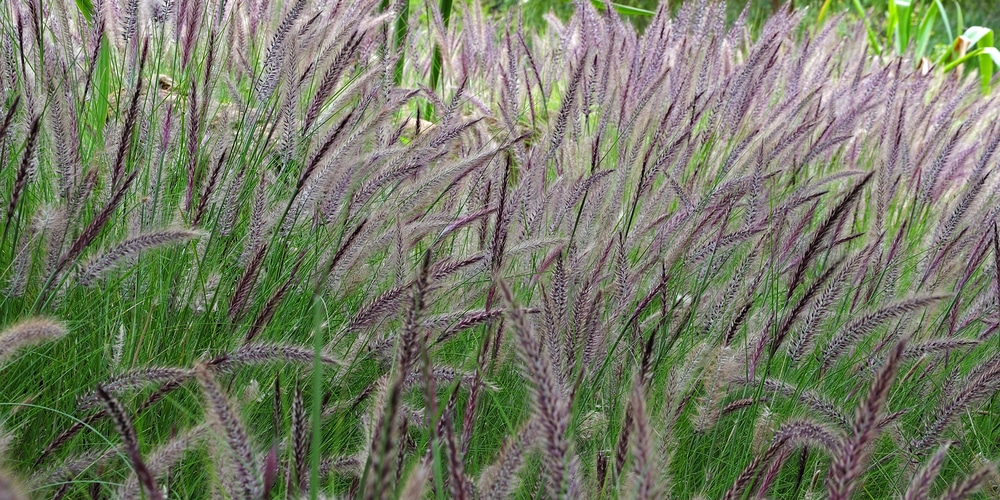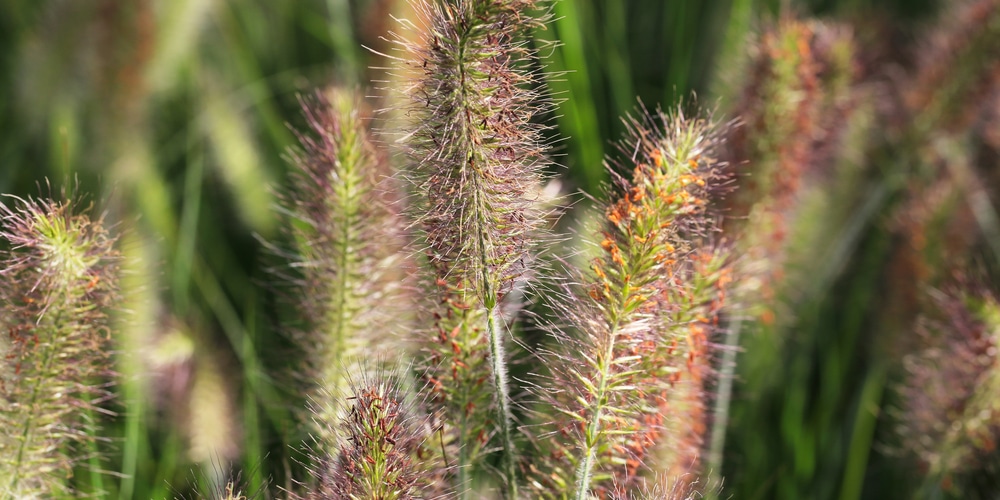Chinese Fountain Grass is an ornamental grass worthy of your attention. If you wish to plant it in your garden, here are some basic planting and care guidelines you can follow.
| Botanical Name | Pennisetum alopecuroides |
| Common Name | Foxtail Grass, Fountain Grass, Chinese Fountain Grass |
| Plant Type | Perennial |
| Flower Color | Bottlebrush blooms that range from copper tan to red purple |
| Size When Mature | 24 to 36 inches |
| Bloom Time | Early summer through fall |
| Sun Requirements | Full sun or partial shade |
| USDA Hardiness Zones | 6 to 9 |
| Soil PH Range | Any |
| Soil Type | Well-drained, loam or sand |
| Water Needs | Medium |
| Native Area | East Asia, Australia |
What you Need to Know About Chinese Fountain Grass
A graceful ornamental grass belonging to the fountain grass family, Foxtail grass are prized landscape specimens with cascading foliage that turns from green to beige, and bottlebrush flowers that appear like foxtail on stems.
It’s easy to grow and can be used single, in containers or en masse. Buds start appearing in early summer and persist until early fall.
How to Care for Chinese Fountain Grass
Here’s everything you need to know about growing and caring for a thriving Chinese Fountain Grass.
Light
In zones 6 through 9 the recommended spot in your garden or yard is one that gets full sun. If you want your Chinese Fountain Grass to flourish then you should give it plenty of light throughout the day.
On higher zones you can put the Fountain Grass in part-shade in the afternoon to protect it from the blazing sun. Otherwise, sun is needed for the grass to produce lots of bloom.
Water and Soil Needs
Chinese Fountain Grass can grow in any soil type, from loamy to sand and everything in-between.
What you’ll want is a well-draining soil that allows excess water to pass through- sandy garden mix and potting soil with amendment are excellent for the tough fountain grass.
As far as soil pH is concerned it can be neutral, acidic or alkaline. The grass species isn’t really picky about medium as long as it gets moderate watering and nutrition.
It’s worth noting that Chinese Fountain Grass is drought tolerant and can survive several days to a week without getting water.
Infrequent watering is the key, but you’ll need to water more if your plant is in a container.
Temperature Requirements
Foxtail Grass grows well in zones 6 to 9, with the lowest temperature it can tolerate being minus 10 degrees F or minus 23 degrees C
Fertilizer
The best fertilizer to use on a Chinese Fountain Grass is a balanced product that encourages blooming.
The grass species can grow without regular fertilization, and it takes very well to natural ones such as organic compost, rain water, pond water or mulch. Alternatively, you can apply a liquid fertilizer so your plant gets the nutrients quickly.
New plants can be fed as they’re put in the ground, while established fountain grasses can be fed in early spring and midway through the growing season. Do not fertilize a month or two before winter as new growth will be damaged by frost.
Common Diseases
Typically, Chinese Fountain Grass are unaffected by diseases and shake them off quickly.
However, you’ll want to manage your watering so the roots won’t stay wet and develop rot (or otherwise known as rust). In severe cases it’s recommended that you change the soil and make it more airy and loose, such as sand or gravel into the mix.
As far as pests are concerned, the fountain grass has none except for spider mites. This can be treated with any natural pesticide and regular application as needed. It’s worth noting that although Chinese Fountain Grass attracts birds, it’s deer-resistant so you won’t likely see them grazed to the ground.
Chinese Fountain Grass Propagation
Propagation of the Chinese Fountain Grass can be done via seeds in containers or division. You can sow the seeds in containers and place them in a greenhouse to get a higher chance of success.
Alternatively, you can divide the grass clumps in spring and once the ground warms up and encourages them to come out of dormancy. It’s a good idea to divide after overwintering so you won’t have to do the work again throughout the growing season.
Cut the root bale with a knife or garden shears, then place the divided plant into a new container or on the ground. Water well and wait for signs of growth.
Related Article: Weeds and Grasses That Look Like Wheat

